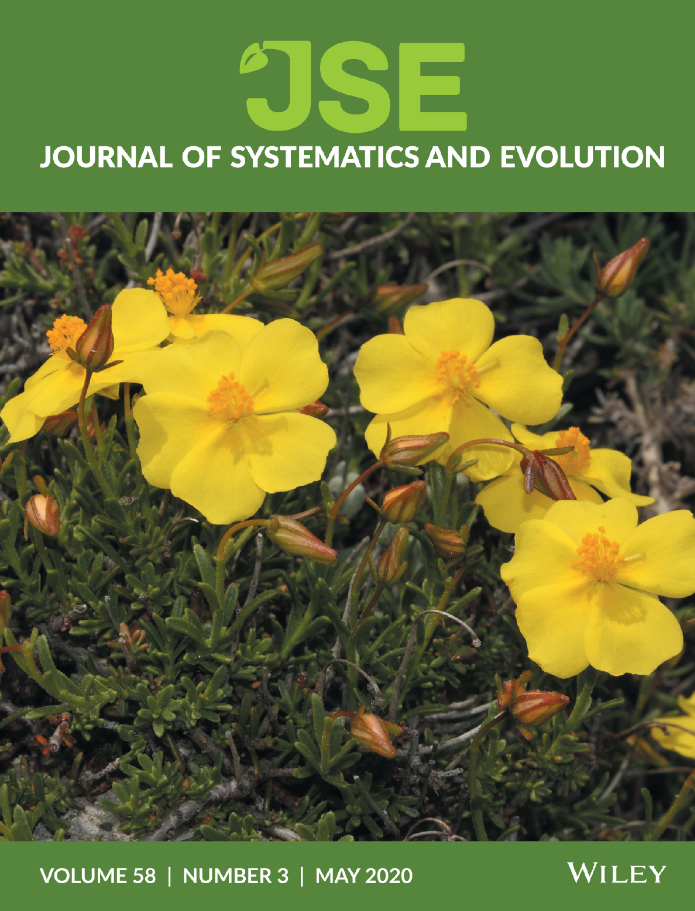Table of Contents
-

Volume 58 Issue 3
Cover illustration: Fumana lacidulemiensis Güemes is an endemic species of a very small area at the Sierra de Grazalema (Cádiz) in Spain. It lives on dolomitic sands and rocks in isolated areas. The species is listed as Endangered (EN in terms of IUCN) and there are only three populations known that are located within the Sierra de Grazalema Natural Park. The flowers, like those of all the species of the genus Fumana, have sterile stamens in the outer whorl of the androecium, and a tilted style, which is longer than the stamens. This is the first image of the species that is published in a scientific journal since the species was described in 1992. Photograph by Jaime Güemes. See Carrió et al., pp. 201-220 in this issue. [Detail] ...
Editors-in-Chief
Song Ge
Jun Wen
Song Ge
Jun Wen
Impact Factor
3.7
JCR 2022 IF ranking: 60/238 (Plant Sciences, top 25%, Q2 quartile)
Journal Abbreviation: J Syst Evol
CN: 11-5779/Q
Frequency: Bi-monthly
Journal Abbreviation: J Syst Evol
| ISSN: | 1674-4918 (Print) 1759-6831 (Online) |
Frequency: Bi-monthly

Scan to view the journal on your mobile
device
device

Scan to follow us on WeChat







